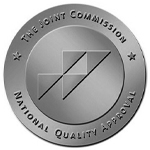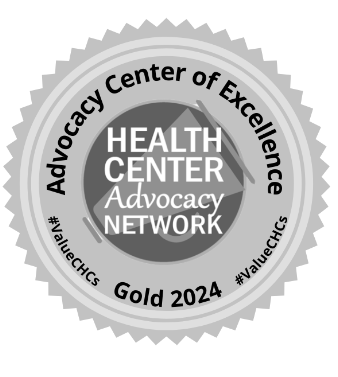
The new year is often viewed as a chance for a fresh start, with countless people making resolutions to lead healthier lives. Unfortunately, after a couple of weeks many people give up on their resolutions and slip back into old habits. A big reason for this is that resolutions often involve rigid rules and sudden lifestyle changes, which is difficult for anyone to stick to long-term. Dr. Rebecca Patterson, a physician at Keystone Family Medicine, has some healthy tips that anyone can incorporate into their daily habits which will add up to big changes over time.
Eat Healthier By Making Small Changes
When committing to eating healthier, whether it is to lose weight or improve your overall health, slow and steady changes typically provide better results than a complete diet overhaul. I don’t recommend going on a “diet” in the traditional sense by sticking to a rigid daily calorie count or eliminating food groups. Most times, this leads to burnout and eventually gaining back any weight you lost and possibly more. Instead, focus on making healthier eating choices overall while still enjoying your favorite less-nutritional foods in moderation. Try to incorporate more whole foods into your diet and less processed items. People sometimes want a magic solution (pills, meal replacement shakes, or bars), but there just is no such thing! People have been eating food for a long time and food that looks like food our ancestors ate is going to be the healthiest option every time (and will cost you less long-term than eating prepackaged foods). The less ingredients listed on food the better, and the best choices won’t even have nutrition labels – think apples, broccoli, carrots, etc.
Look at your current eating habits and find some easy places to start making changes. Switch out white bread for a more nutritious whole grain, sprouted or grain-free alternative. Try whole wheat pasta and brown rice instead of white. Swap sugary cereal for oatmeal, a homemade yogurt parfait (with plain Greek yogurt) or chia seed pudding and replace your glass of juice with a piece of fruit. Try cinnamon in your coffee instead of sugar and if you drink soda regularly, replace a few glasses a week with plain or flavored sparkling water.
Eat less red meat and incorporate more lean meat like fish, chicken and turkey into your meals. Pack half the amount of the chips or pretzels you would normally put in your lunchbox and replace the other half with something with more nutrients such as veggies or a piece of fruit (these will also keep you full longer). Pay attention to portion sizes, which are often much larger in the United States than in other parts of the world. Stop eating when you are satisfied and don’t prioritize being a member of the “Clean Plate Club” as you can save leftovers for later.
Pay Attention To Nutrition Labels
Learning about nutrition can seem intimidating but learning the basics doesn’t need to be difficult. One of the most important things you can learn is how to understand nutrition labels on packaged foods. Make a habit of reading them on each item you buy, as you may find healthier alternatives are available. There are five important things to look for on nutrition labels. 1. Serving Size. This one can be sneaky as many people would assume a can of soup or a bottled drink would be one serving. But look closely! You may find that the serving size is smaller than you would expect, which affects how you should read the rest of the label. 2. Calories. This comes back to looking at the serving size – if 100 calories are listed on the package but the serving size is 3, keep in mind consuming the whole package would equal 300 calories. For a healthy weight, the amount of calories you eat and drink in a day should be based on how many calories your body is using. 2,000 calories a day is the typical recommendation, but that number may need to be higher or lower based on your body type, age, activity level, etc. There are plenty of reputable sources online to help you find your ideal calorie range, or your healthcare provider can also help you figure this out. 3. Nutrients. This section of the label lists the amount of fat, cholesterol, sodium, carbs, etc. in the item. Be mindful of limiting the amount of saturated fat, sodium and added sugars you consume. Items high in dietary fiber, vitamins, calcium, iron and potassium will typically be better choices. 4. Percent of Daily Value. This section is especially helpful as the math is done for you, and you don’t need to remember the recommended daily nutrients. Most labels are based on a 2,000 calorie diet, so keep this in mind as well as the serving size as you read over these percentages. 5. Ingredients. Foods that are minimally processed are usually best, so the fewer the ingredients listed, the better. Typically, packages that list ingredients you recognize and know how to pronounce are going to be healthier choices. Not-so-good-for-you things can be hidden under other names. For example, added sugars may be listed by names such as corn syrup, dextrose, fructose, etc.
Drink Enough Water
I feel the vast majority of people are chronically dehydrated and sometimes thirst can be confused with hunger. Drinking plain water may seem boring and may be challenging at first if you are used to sweetened drinks, but it is so important for your overall health. We lose fluids through our bodily functions (even breathing) and when we aren’t properly hydrated, it can lead to things like fatigue, increased irritability or depression, kidney stones, gallstones, urinary tract infections, constipation and more.
Many people believe the recommended amount of water is eight glasses a day, but this can vary based on things like body size, physical activity levels, climate, etc. Your healthcare provider can help you decide on a water intake goal, or you can also get an idea if you are drinking water enough by the color and amount of your urine. If urine is darker in color and/or small in amount, it can be a sign of dehydration (though this can be affected by other things as well, such as foods and medications). Thirst is not always an accurate indicator of proper hydration. To help you drink more water, you could try keeping a tally of your daily water intake or making it a habit to drink a large glass with each meal and snack.
If you are used to flavored beverages and find it difficult to drink plain water, it’s OK to start slowly. Your taste buds will adjust over time. Try replacing one or two servings of your usual beverage each day with water, and increase your goal as you go. Carbonated water can be a good replacement for soda, but watch those nutrition labels for calories and sugar, including other hidden sweeteners such as high fructose corn syrup. For a healthy and cheap alternative, try plain sparkling water and add just an ounce or two of juice. Adding slices of citrus fruit, fresh herbs like mint or crushed berries also make for a flavorful and healthy drink. Experiment and see which combinations you like best!
While it’s OK to enjoy other beverages in moderation, the majority of what you drink should be water. Benefits of this include healthy skin (it has even been shown to reduce wrinkles!), lubricating joints and tissues, boosting energy and brain function, helping with proper digestion, reducing bloating, treating or preventing headaches, aiding in weight loss and more. Fruits and veggies are also a great source of water, so make sure you are including plenty in your diet!
When incorporating a healthy habit into your life, remember to look at it as a gradual lifestyle change and don’t set unrealistic expectations for yourself. Choose goals that are attainable and won’t lead to burnout, increasing them as you go. These little changes will slowly add up to big health benefits. I will discuss more achievable healthy habits in my next article.
This article contains general information only and should not be used as a substitute for professional diagnosis, treatment or care by a qualified health care provider.




